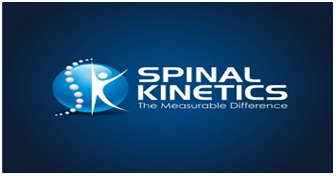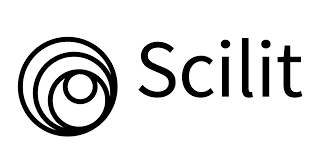Nanodiamonds: Shedding Light on the Future of Nanomedicine
Min S W and Bumb A *
Bikanta Corporation, 1 Cyclotron Rd, Berkeley, USA
Submission: March 13,2017; Published: April 25, 2017
*Corresponding author: Ambika Bumb, Bikanta Corporation, 1 Cyclotron Rd, Berkeley, USA, Tel: 510-402-9871; Email: ambika_bumb@bikanta.com
How to cite this article: Min S W, Bumb A. Nanodiamonds: Shedding Light on the Future of Nanomedicine. Glob J Nano. 2017; 2(1): 555576. DOI: 10.19080/GJN.2017.02.555576
Abstract
Nanodiamonds (NDs) are a new class of nanomaterial that have gained much interest in nanomedicine due to their unique chemical, mechanical and optical properties. As such, NDs have been shown to maximize drug therapeutic efficacy by increasing the drug's solubility and bioavailability and overcoming efflux in tumor cells. Moreover, NDs have also been incorporated into tissue scaffolds to promote bone growth regeneration. As for the fluorescent NDs (FNDs), their stable fluorescent signal has found renewed application in bio-imaging especially for longterm cell tracking. While considerable progress has been made in this field, the clinical translation and commercial potential of nanoparticles in medical diagnostics and therapy is still early and unknown due to the lack of understanding of prolonged exposure of nanoparticles or questions on improvement of efficacy in humans. This mini-review does not intend to cover the entire field of NDs, but rather offers a brief introduction and highlights the recent advances, challenges and outlook of NDs in nanomedicine.
Keywords: Nanodiamonds; Fluorescent nanodiamonds; Nanomedicine; Drug delivery; Long-term cell tracking; Cancer stem cells; Bio-imaging; Cancer
Abbreviations: NDs: Nanodiamonds; FNDs: Fluorescent Nanodiamonds; CVD: Chemical Vapor Deposition; NV: Nitrogen Vacancy; PLLA: Poly(L- Lactic Acid); MPCVD: Microwave Plasma Enhanced Chemical Vapor Deposition; QDs: Quantum Dots; LSC: Lung Stem/Progenitor Cell; CSC: Cancer Stem Cell
Introduction
While nanodiamonds (NDs) have emerged recently in the biomedical field, their discovery actually dates back to the 1960s where Russian scientists first noticed the tiny diamond crystals in the remnants of their carbon-based explosives [1-3]. Today, the smallest NDs (typically< 10 nm) are produced using an explosion process, and the resultant products are called detonation NDs (DNDs). The larger NDs are produced by either a high pressure-high temperature (HPHT) process or via chemical vapor deposition (CVD) [2-4], followed by a ball-milling process to crush the micron sized diamonds into NDs, and finally washed in strong acids to remove surface impurities. To make fluorescent nanodiamonds (FNDs), high-energy sources (e.g. electrons, He+, or H+ ions) are used to bombard the HPHT or CVD diamonds to create color vacancy centers within the diamond lattice [5-7].
DNDs have seen increasing use in drug delivery thanks to their low cytotoxicity across multiple cells lines and in animals [8-10], enhanced solubility, and bioavailability of chemotherapeutic drugs [9-14]. Pioneering work by Prof. Dean Ho and his team showed that when doxorubicin, a hydrophobic anticancer drug was adsorbed onto NDs, a significant increase in apoptosis and tumor growth inhibition in both murine liver tumor and mammary carcinoma models was observed compared to doxorubicin alone [11]. More significantly, they found that because the ND-doxorubicin can overcome drug efflux from tumor cells, lower drug concentration can be used in order to reduce the toxicity to normal healthy cells. Similarly, Liu et al. [15] showed that ND-conjugated paclitaxel induced both mitotic arrest and apoptosis in the A549 human lung carcinoma cells, and blocked tumor growth in a xenograft mouse model.
Another study by Lee et al. [16] demonstrated that when amoxicillin-loaded NDs were incorporated into gutta percha (a rubber cement used in root canal filling), the amoxicillin- ND composite aided in the delivery of amoxicillin in root canal therapy. The authors suggested that the slow release of amoxicillin from the NDs may have reduce antibiotic resistance, which could prevent the reinfection of the root canal system and increase in the overall success rates of endodontic therapies. As highlighted in these studies, NDs show promise as nanocarriers for drug delivery due to their exceptional biocompatibility and solubility in water, though more work is still needed to evaluate the long-term effects of drug delivery with NDs.
In addition to their biocompatibility, NDs also have superior mechanical properties that make them ideal as composite materials for bone scaffolds [17-20] or as coatings for medical implants [21-24]. For example, when incorporated into a poly (l-lactide-co-ε-caprolactone) scaffold, Yassin et al. [21] showed that the ND-composite scaffold not only increases seeding efficiency of bone marrow stroma cells (BMSCs), but also enhances osteogenicity and promotes bone tissue growth when implanted into calvaria of a rat model compared to the control scaffold alone. Zhang et al. [18] demonstrated that when NDs were incorporated into a biodegradable polymer, poly(L-lactic acid) (PLLA), the NDs significantly increased the hardness and Young's modulus of PLLA to near the mechanical properties of human cortical bone. Like the previous study, the ND-PLLA composite did not affect the growth and proliferation of marine osteoblasts.
Using microwave plasma enhanced chemical-vapor- deposition (MPCVD), Pareta et al. [22] created various diamond coatings on titanium surfaces and showed that NDs (< 100 nm) with surface hydroxyls and amines promoted osteoblast adhesion and proliferation [23]. These studies demonstrated the potential of NDs in bone tissue regeneration and orthopedic coating applications as they can increase the mechanical properties of the implanted materials and promote cell adhesion and tissue growth.
FNDs with the negatively charged vacancy (NV-) center that emits fluorescence in the near infrared (NIR) region of between 600-800 nm are by far the most used FNDs in bioimaging [25-2929].
The NIR region is considered as the ideal window for maximum tissue imaging depth because of minimal light absorption from water and other tissue components such as hemoglobin, deoxyhemoglobin and melanin, as well as exponentially decayed scattering effects from tissue structures and fat cells. Wu et al. [29] demonstrated that the FNDs can be used to track lung stem/progenitor cells (LSC) in-vivo using a mouse model for up to one week without affecting in-vitro cell differentiation or in-vivo cell migration. The injected LSC containing FNDs also showed improved localization and cell regeneration at the injury site. This work adds significant value to the field of regeneration medicine because the FNDs allow for tracking and quantitative evaluation of the distribution of transplanted stem cells in tissue.
In another study, Lin et al. [30] demonstrated the application of FNDs to track and identify quiescent cancer stem cells (CSCs) in an in-vitro breast cancer mammosphere model over a period of 20days. Moreover, identification and isolation of slow and fast proliferating CSCs within the mammosphere was enabled by sorting the high and low FND-labeled cells where fast proliferating cell populations have fewer FNDs. Taken together, these studies showed that FNDs have both the biocompatibility and photostability that are necessary for long term in-vivo cell tracking and stem cell research applications.
Discussion
The emergence of nanomedicine in the last decade has changed the way in which therapeutic drugs are delivered and has provided an improvement to existing contrast agents used in medical imaging. In this mini-review, we have highlighted some recent advances in ND-based chemotherapy [9-13], ND- composite materials used in bone scaffold and implants [18], [21-23] as well as the long-term cell tracking application using FNDs [27-30]. While significant progress has been made, there are still limitations that have prevented the widespread use of NDs and FNDs in biomedicine. One such factor is their size and polydispersity. Compared to other nanomaterials such as gold nanoparticles and quantum dots, whose sizes are typically less than 10nm, the smallest FNDs available in the market today are >20nm. In certain applications, such as single-molecule binding, a smaller size is desired. Moreover, NDs and FNDs have large polydispersity (both in sizes and shapes) due to the top-down manufacturing process that involves ball-milling larger particles and then separating by centrifugation.
Although the low cytotoxicity and indefinite photostability of FNDs has a significant advantage over organic dyes and quantum dots (QDs), the fluorescence intensity of small FNDs are 1-2 orders of magnitude lower than that of organic dyes and QDs [5]. This is due to the inherent size constraint of the ND crystals to hold large number of vacancy centers, and low color center conversion efficiency during the thermal annealing process. Finally, compared to the spectrum of colors available for organic dyes and QDs, only two colors of FNDs (red and green) are available commercially at the time of this writing. Nonetheless other color center FNDs have already being synthesized in research laboratories [31]. Therefore, much work remains to be done in order for FNDs to gain more traction in the bio-imaging market.
Nanotechnology has already been used in the clinic or in clinical trials as drug carriers or contrast agents to aid in the detection, diagnostics and treatment of various diseases including cancer [32-34]. Considering the biocompatibility of NDs and promising pre-clinical results, it is encouraging to note that clinical trials have already begun for the ND-gutta percha composite in root canal treatment (clinicaltrials.gov identifier NCT02698163). Whether NDs and FNDs can successfully translate into the clinic is yet to be seen, but given the recent progress and increasing excitement and interests surrounding nanomedicine, the future of NDs looks bright.
Conclusion
Nanotechnology has the potential to change medical diagnostics and therapy. Owing to their excellent biocompatibility, solubility and the indefinite photostability of their fluorescent signal, NDs and FNDs show great promise and are poised to facilitate research and improve imaging, implant coatings and drug delivery in the future.
Acknowledgement
Work at the Molecular Foundry was supported by the Office of Science, Office of Basic Energy Sciences of the U.S. Department of Energy under contract no. DE-AC02-05CH11231.
Conflict of Interest
The authors are employees of Bikanta Corporation, a biotechnology company that focuses on the development and commercialization of fluorescent nanodiamonds for bio-imaging applications. The content is solely the view of the authors and does not necessarily represent the views of U.S. Department of Energy.
References
- Anke Krueger (2008) The structure and reactivity of nanoscale diamond. J Mater Chem 18(13): 1485-1492.
- Krueger A, Lang D (2012) Functionality is Key: Recent Progress in the Surface Modification of Nanodiamond. Adv Funct Mater 22(5): 890906.
- Mochalin VN, Shenderova O, Ho D, Gogotsi Y (2012) The properties and applications of nanodiamonds. Nat Nanotechnol 7(1): 11-23.
- Kaur R, Badea I (2013) Nanodiamonds as novel nanomaterials for biomedical applications: drug delivery and imaging systems. Int J Nanomedicine 8: 203-220.
- Long JS, Chia YF, Yu TC, Kuan MC, YuehCY, et al. (2013) Creating high density ensembles of nitrogen-vacancy centers in nitrogen-rich type Ib nanodiamonds. Nanotechnology 24: pp 31.
- Barnard AS (2009) Diamond standard in diagnostics: nanodiamond biolabels make their mark. Analyst 134(9): 1751-1764.
- Schirhagl R, Chang K, Loretz M, Degen CL (2014) Nitrogen-Vacancy Centers in Diamond: Nanoscale Sensors for Physics and Biology. Annu Rev Phys Chem 65: 83-105.
- Krueger A (2008) New Carbon Materials: Biological Applications of Functionalized Nanodiamond Materials,” Chem. Eur J 14(5): 1382-1390.
- Zhu Y, Li J, Li W, Zhang Y, Yang X, et al. (2012) The Biocompatibility of Nanodiamonds and Their Application in Drug Delivery Systems. Theranostics 2(3): 302-312.
- Lam R, Ho D (2009) Nanodiamonds as vehicles for systemic and localized drug delivery. Expert Opin Drug Deliv 6(9): 883-895.
- Huang H, Pierstorff E, Osawa E, Ho D (2007) Active nanodiamond hydrogels for chemotherapeutic delivery. Nano Lett 7(11): 3305-3314.
- Kim HJ, Zhang K, Moore L, Ho D (2014) Diamond Nanogel-Embedded Contact Lenses Mediate Lysozyme-Dependent Therapeutic Release. ACS Nano 8(3): 2998-3005.
- Chow EK, Zhang XQ, Chen M, Lam R, Robinson E, et al. (2011) Nanodiamond Therapeutic Delivery Agents Mediate Enhanced Chemoresistant Tumor Treatment. Sci Transl Med 3(73): 73ra21.
- Zhang XQ, Lam R, Xu X, Chow EK, Kim HJ, yet al. (2011) Multimodal Nanodiamond Drug Delivery Carriers for Selective Targeting, Imaging, and Enhanced Chemotherapeutic Efficacy. Adv Mater 23(41): 47704775.
- Liu KK, Zheng WW, Wang CC, Chiu YC, Cheng CL, et al. (2010) Covalent linkage of nanodiamond-paclitaxel for drug delivery and cancer therapy. Nanotechnology 21(31): 315106.
- Lee DK, Kim SV, Limansubroto AN, Yen A, Soundia A, et al. (2015) Nanodiamond-Gutta Percha Composite Biomaterials for Root Canal Therapy. ACS Nano 9(11): 11490-11501.
- Corona GJ, Chen X, Yang Q (2016) Effect of Nanoparticle Incorporation and Surface Coating on Mechanical Properties of Bone Scaffolds: A Brief Review. J Funct Biomater 7(3): pii: E18.
- Zhang Q, Mochalin VN, Neitzel I, Knoke IY, Han J, et al. (2011) Fluorescent PLLA-nanodiamond composites for bone tissue engineering. Biomaterials 32(1): 87-94.
- Sun Y, Yang Q, Wang H (2016) Synthesis and Characterization of Nanodiamond Reinforced Chitosan for Bone Tissue Engineering. J Funct Biomater 7(3): pii: E27.
- Brady MA, Renzing A, Douglas TE, Liu Q, Wille S, et al. (2015) Development of Composite Poly(Lactide-co-Glycolide)- Nanodiamond Scaffolds for Bone Cell Growth. J Nanosci Nanotechnol 15(2): 10601069.
- Yassin MA, Mustafa K, Xing Z, Sun Y, Fasmer KE, et al. (2017) A Copolymer Scaffold Functionalized with Nanodiamond Particles Enhances Osteogenic Metabolic Activity and Bone Regeneration. Macromol Biosci.
- Pareta R, Yang L, Kothari A, Sirinrath S, Xiao X, et al. (2010) Tailoring nanocrystalline diamond coated on titanium for osteoblast adhesion. J Biomed Mater Res A 95(1): 129-136.
- Yang L, Sheldon BW, Webster TJ (2009) Orthopedic nano diamond coatings: Control of surface properties and their impact on osteoblast adhesion and proliferation. J Biomed Mater Res A 91(2): 548-556.
- Hristova K, Pecheva E, Pramatarova L, Altankov G (2011) Improved interaction of osteoblast-like cells with apatite-nanodiamond coatings depends on fibronectin. J Mater Sci Mater Med 22(8): 1891-900.
- Balasubramanian G, Lazariev A, Arumugam SR, Duan DW (2014) Nitrogen-Vacancy color center in diamond-emerging nanoscale applications in bioimaging and biosensing. Curr Opin Chem Biol 20: 69-77.
- Chang BM, lin HH, Su LY, Lin WD, Lin R, Jet al. (2013) Highly Fluorescent Nanodiamonds Protein-Functionalized for Cell Labeling and Targeting. Adv Funct Mater 23(46): 5737-5745.
- Hsiao WW, Hui YY, Tsai PC, Chang HC (2016) Fluorescent Nanodiamond: A Versatile Tool for Long-Term Cell Tracking, Super-Resolution Imaging, and Nanoscale Temperature Sensing. Acc Chem Res 49(3): 400-407.
- Vaijayanthimala V, Cheng PY, Yeh SH, Liu KK, Hsiao CH, et al. (2012) The long-term stability and biocompatibility of fluorescent nanodiamond as an in vivo contrast agent. Biomaterials 33(31): 7794-7802.
- Wu TJ, Tzeng YK, Chang WW, Cheng CA, Kuo Y, et al. (2013) Tracking the engraftment and regenerative capabilities of transplanted lung stem cells using fluorescent nanodiamonds. Nat Nanotechnol 8(9): 682-689.
- Lin HH, Lee HW, Lin RJ, Huang CW, Liao YC et al. (2015) Tracking and Finding Slow-Proliferating/Quiescent Cancer Stem Cells with Fluorescent Nanodiamonds. Small 11(34):4394-4402.
- Iwasaki T, Ishibashi F, Miyamoto Y, Doi Y, Kobayashi S, et al. (2015) Germanium-Vacancy Single Color Centers in Diamond. Sci Rep 5: 12882.?
- Eifler AC, Thaxton CS (2011) Nanoparticle therapeutics: FDA approval, clinical trials, regulatory pathways, and case study. Methods Mol Biol 726: 325-338.
- Davis ME, Chen ZG, Shin DM (2008) Nanoparticle therapeutics: an emerging treatment modality for cancer. Nat Rev Drug Discov 7(9): 771-782.
- Kunz SLA, Dubrovska A, Peitzsch C, Ewe A, Aigner A, et al. (2017) Nanoparticles for radiooncology: Mission, vision, challenges. Biomaterials 120: 155-184.






























